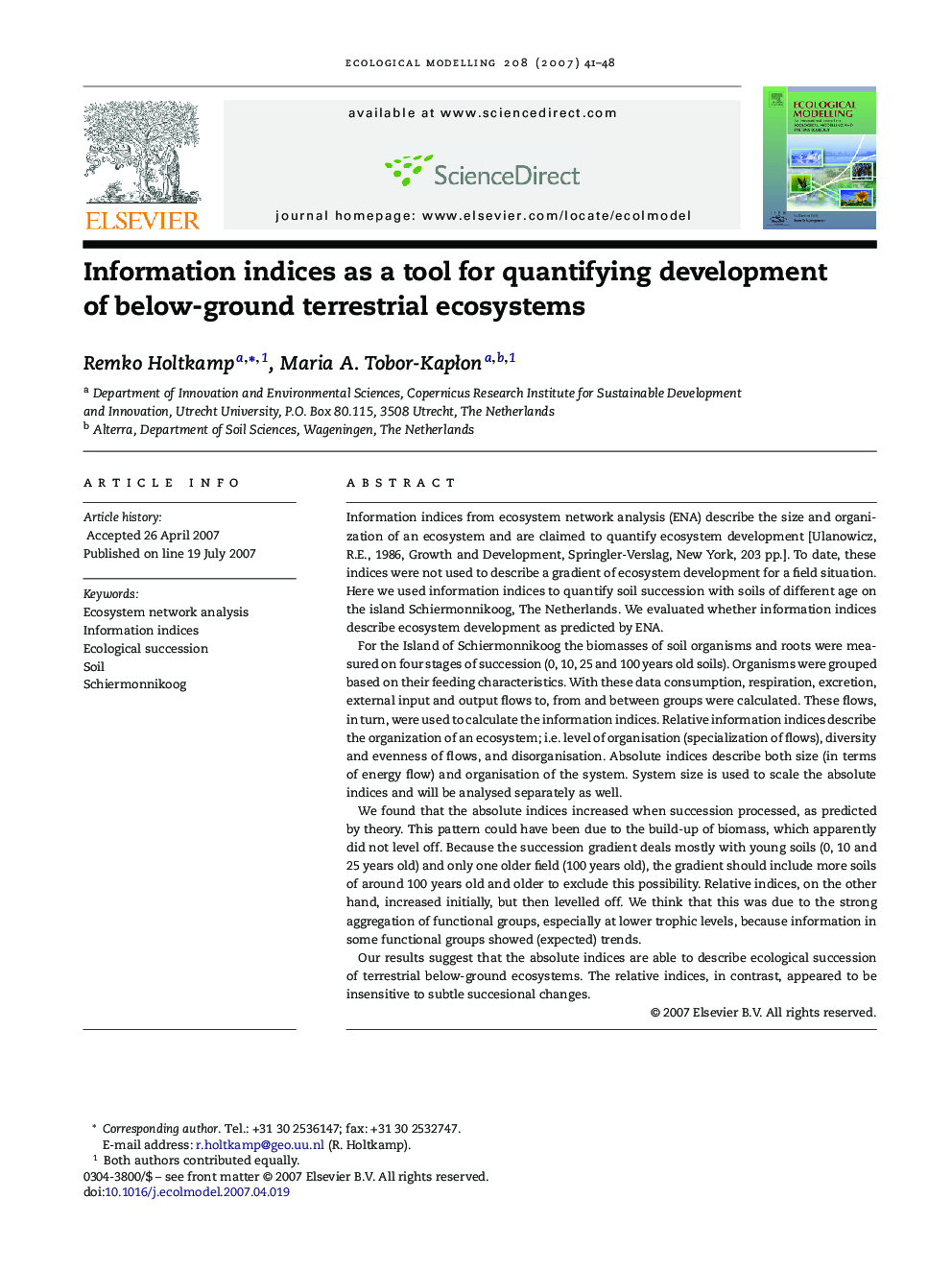| کد مقاله | کد نشریه | سال انتشار | مقاله انگلیسی | نسخه تمام متن |
|---|---|---|---|---|
| 4378630 | 1303486 | 2007 | 8 صفحه PDF | دانلود رایگان |

Information indices from ecosystem network analysis (ENA) describe the size and organization of an ecosystem and are claimed to quantify ecosystem development [Ulanowicz, R.E., 1986, Growth and Development, Springler-Verslag, New York, 203 pp.]. To date, these indices were not used to describe a gradient of ecosystem development for a field situation. Here we used information indices to quantify soil succession with soils of different age on the island Schiermonnikoog, The Netherlands. We evaluated whether information indices describe ecosystem development as predicted by ENA.For the Island of Schiermonnikoog the biomasses of soil organisms and roots were measured on four stages of succession (0, 10, 25 and 100 years old soils). Organisms were grouped based on their feeding characteristics. With these data consumption, respiration, excretion, external input and output flows to, from and between groups were calculated. These flows, in turn, were used to calculate the information indices. Relative information indices describe the organization of an ecosystem; i.e. level of organisation (specialization of flows), diversity and evenness of flows, and disorganisation. Absolute indices describe both size (in terms of energy flow) and organisation of the system. System size is used to scale the absolute indices and will be analysed separately as well.We found that the absolute indices increased when succession processed, as predicted by theory. This pattern could have been due to the build-up of biomass, which apparently did not level off. Because the succession gradient deals mostly with young soils (0, 10 and 25 years old) and only one older field (100 years old), the gradient should include more soils of around 100 years old and older to exclude this possibility. Relative indices, on the other hand, increased initially, but then levelled off. We think that this was due to the strong aggregation of functional groups, especially at lower trophic levels, because information in some functional groups showed (expected) trends.Our results suggest that the absolute indices are able to describe ecological succession of terrestrial below-ground ecosystems. The relative indices, in contrast, appeared to be insensitive to subtle succesional changes.
Journal: Ecological Modelling - Volume 208, Issue 1, 24 October 2007, Pages 41–48